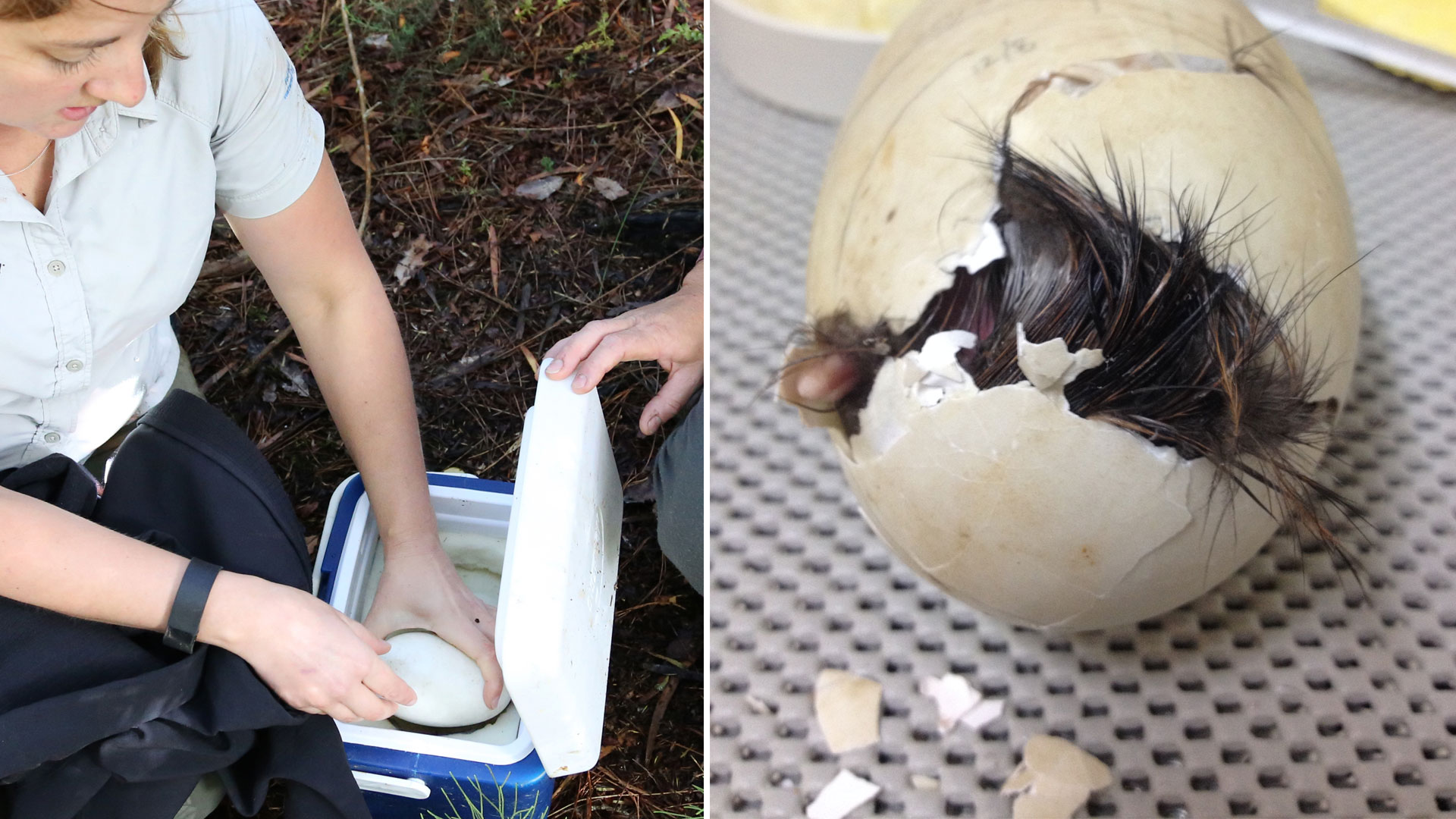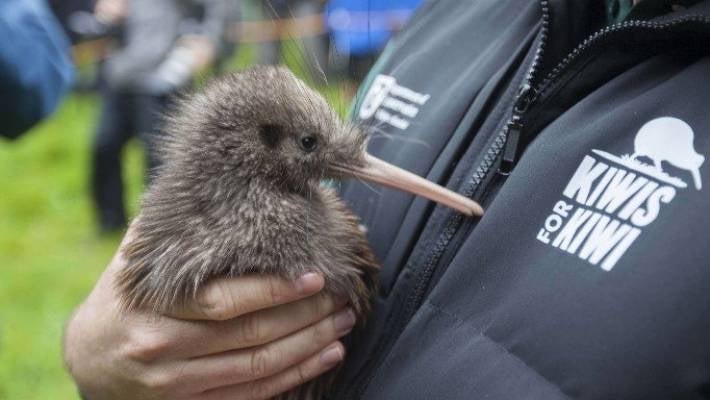Is it a bird?
Kiwi bird tendencies and adaptations are so odd, that they don’t characteristically resemble a bird. Kiwi are nocturnal, yet their eyesight is very poor when compared to other nocturnal birds. They sleep in their burrow during the day and use their excellent sense of smell and touch to navigate in the dark. They have powerful legs, nostrils at the tip of their long beak, and two layers of feathers – an outer layer which acts like a rain coat to keep the rain out and a layer of soft downy feathers like a sleeping bag for warmth. The kiwi does have wings of sorts – but you just have to look very hard to find them – they’re puny vestigial wings and can’t possibly lift their large bird bodies off the ground, no matter how hard they try! Some Kiwi species also have a little-known un-birdlike trait: they ‘mark their territory’ with smelly droppings in the same way a cat or dog would. For all their weird and wonderful tendencies, the kiwi is certainly a special bird we can all be proud of helping protect for genertions to come.

Kiwi at Auckland Zoo
You might be wondering if you’ll actually see any kiwi at Auckland Zoo, given that these special birds are nocturnal, and we admit visitors to the Zoo during daylight hours. Our purpose-built Night habitat, Te Pō, is designed to switch day to night, allowing the kiwi to be fully nocturnal during our daytime and retreat to their burrows at night. This allows you the chance to see the kiwi during the day.

Can you see in the dark? Kiwi navigate in the dark with their excellent senses of smell and touch, while we humans try to see in the dark with our eyes. To get the best experience take your time in Te Pō (The Night) and give your eyes time to adjust to the darkness.
Sticky beaks get the grub To find food a kiwi will tap the ground with its beak, probing the soil and sniffing loudly. They have nostrils at the tip of their long beak and can sniff out an earthworm up to 3cm underground. Once a snack has been located, the kiwi pushes its beak deep into the earth. Kiwi can use their beak as a lever, moving it back and forth to widen the hole. Kiwi dine on earthworms, insects and their grubs, berries and other fallen fruits.
Zoo Tales – Kiwi season
Kiwi breeding season is well underway!
In the Wild
Origin: New Zealand (endemic).
North Island brown kiwi are found in four distinct regions of the North Island: Northland, Coromandel, eastern (Bay of Plenty, East Coast, Hawke’s Bay) and western (King Country, Taranaki, Whanganui).
Habitat: North Island brown kiwi seem to prefer lowland and coastal native forest – their population density is highest in these areas. However, they are also found in sub-alpine areas – at the Chateau in Tongariro National Park, and near the bush-line at Mt Taranaki. Huge changes to New Zealand’s original forest cover mean they have had to be adaptable.
Today North Island brown kiwi live in many different types of habitat, including exotic forest plantations and rough farmland. While this may seem surprising, plants growing under Pinus radiata trees often support native species, which means the soils provide an ample supply of invertebrates for kiwi to eat.
Conservation status: IUCN: VulnerableNew Zealand Threat Classification System (NZTCS): The North Island brown kiwi classification has moved from At risk, Declining to Not Threatened which is very exciting. The North Island brown kiwi has benefitted from conservation management, and Auckland Zoo has played a part in this recovery programme.
How we’re helping
Auckland Zoo is proud to be in partnership with the Department of Conservation and Save the Kiwi to support a kiwi recovery programme called Operations Nest Egg (O.N.E) This programme involves taking kiwi eggs from the wild and incubating and hatching them at the Zoo. When they’ve grown enough to recover their hatch weight, these birds then ‘take flight’ – being released on predator free island kiwi creches. They stay until they’ve grown big enough to defend themselves from introduced mammal predators before being returned to their forest of origin.

Why are we doing it?
New Zealand’s national icon is notoriously endangered and in need of help. New Zealand, a land of birds, had no land-based mammalian predators before people introduced them. These are now the main threat to kiwi’s survival – killing chicks and adults. Stoats are public enemy number one for kiwi chicks and are the main reason why 95% of kiwi hatched in the wild die before they reach breeding age. Here at Auckland Zoo, our eggs-perts have hatched and released 410 kiwi back to the wild (and counting!).
Operation Nest Egg
Watch our kiwi Zoo Tales trilogy – showing the journey of an Operation Nest Egg kiwi, from egg, to hatch, to release.
How you can help
Be a responsible pet owner. If you’re visiting an area where kiwi live, then make sure you keep your dog on a lead. Kiwi are super smelly, and dogs are inquisitive and can easily sniff them out. Every dog no matter how big, small or well-trained is a potential kiwi killer and can injure or kill an adult kiwi in seconds. But it’s easy to help prevent this – just keep your dog on a lead.
We believe in protecting New Zealand’s native wildlife and we know you do too. Donate here to help us help our national bird. $100 covers a pre-release vet check for an endangered kiwi.





